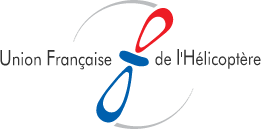EDITORIAL
Draft regulation of flight time limitation
Bonjour à tous
The confirmation of the registration in the EPAS of the regulatory task RMT 0494 (For those how read French, see last week’s UFH newsletter), has sparked several types of reactions, between operators who are rebelling against the resumption of a project From which they had believed to be rid, of the media which wondered why the topic worried the sector, and the administration executives who did not seem to understand the reasons for this opposition.
This is because the subject of FTL is particularly delicate.
The reasons for the reluctance that this regulatory task arouses are easy to understand: the organization and financing of rescue and medical services, nor on labor law are out of the scope of the European Administration. It has no control over the rules for organizing work which are a matter of social negotiations specific to each Member State. It cannot therefore legislate on details such as taking into account standby service in the calculation of rest time. In the case of HEMS flights, the rescue organization must also be compatible with the rules applicable to medical personnel, or even firefighters. To make matters worse, those involved in the same mission may have very different statuses which depend on an organization over which Europe has no jurisdiction. On the same intervention, there may be militaries, Red Cross volunteers and civil servants alongside civil sector employees under state contracts.
Furthermore, in the case of HEMS missions, there are concepts that are not appreciated in the same way depending on the country. They relate in particular to:
- The duration of missions which may be independent of flight time, when for example, the crew must wait at the treatment location for the patient to be stabilized and transportable.
- Taking graduated and assumed risks depending on the stakes.
As for aerial work operations, they are so diverse that European harmonization has led to the creation of SPO (special operations) regulations, the application of which is often nightmarish, both for helicopter operators and for the authorities responsible for their oversight.
Moreover in aerial work, it is rarely possible to set the duration of each flight in advance. The time it takes to replace the statue of the Archangel at the top of Mont Saint Michel, or to dismantle a power line pylon, can easily vary by a factor of three. For example, it is enough that the weather conditions encountered do not exactly conform to the forecasts announced.
Faced with these reasons, the agency had already had to abandon this regulatory task 6 years ago, to the great relief of the operators who had campaigned in this direction. They had been helped by the clear expression of differences between the authorities of the Member States, and had at the time obtained the support of certain national authorities (including the French one) to have the project withdrawn.
The general framework has not changed since then. For the European helicopter sector, the insistence on relaunching the NPA is therefore somewhat surprising, especially since, unless I am mistaken, it is not the key factor on which to prioritize for the improvement of the flight safety. We are talking about relatively brief flights serving a relatively sparse activity. HEMS pilots are not the ones who fly the most, some even tend to complain about it. The relevant national legislation on labor law and social negotiations appears capable of managing fatigue parameters.
The discussions we are having on this matter confirm that EASA is aware of the particular problem that the application of Community regulations on the limitation of flight time for helicopter crews would pose. Would it be possible that the agency would be pushed, perhaps forced, to insist on legislating on this point, by some influential national authorities? Could there be motivations other than flight safety alone? Or are we simply faced with the intransigent application of the spirit of system and the precautionary principle?
EASA released a document last week titled “A Day in the Life of a Pilot.” It relates exclusively to the field of commercial air transport for which the harmonized treatment of this problem can be conceived with applicable rules. Indeed, the document speaks of « airline aircrew« .
From the point of view of operators, often joined by their clients and even by their staff, wanting to transpose these concepts to the helicopter field is simply not possible, except perhaps in the particular case of the oil & gas offshore.
This additional regulation framework would only lead to having to infinitely multiply requests for alternative means of compliance and to managing national exemptions, therefore increasing the administrative burden in sectors where there is really no need to increase artificially constraints in already saturated areas such as on-demand helicopter service and health.
Best regards

